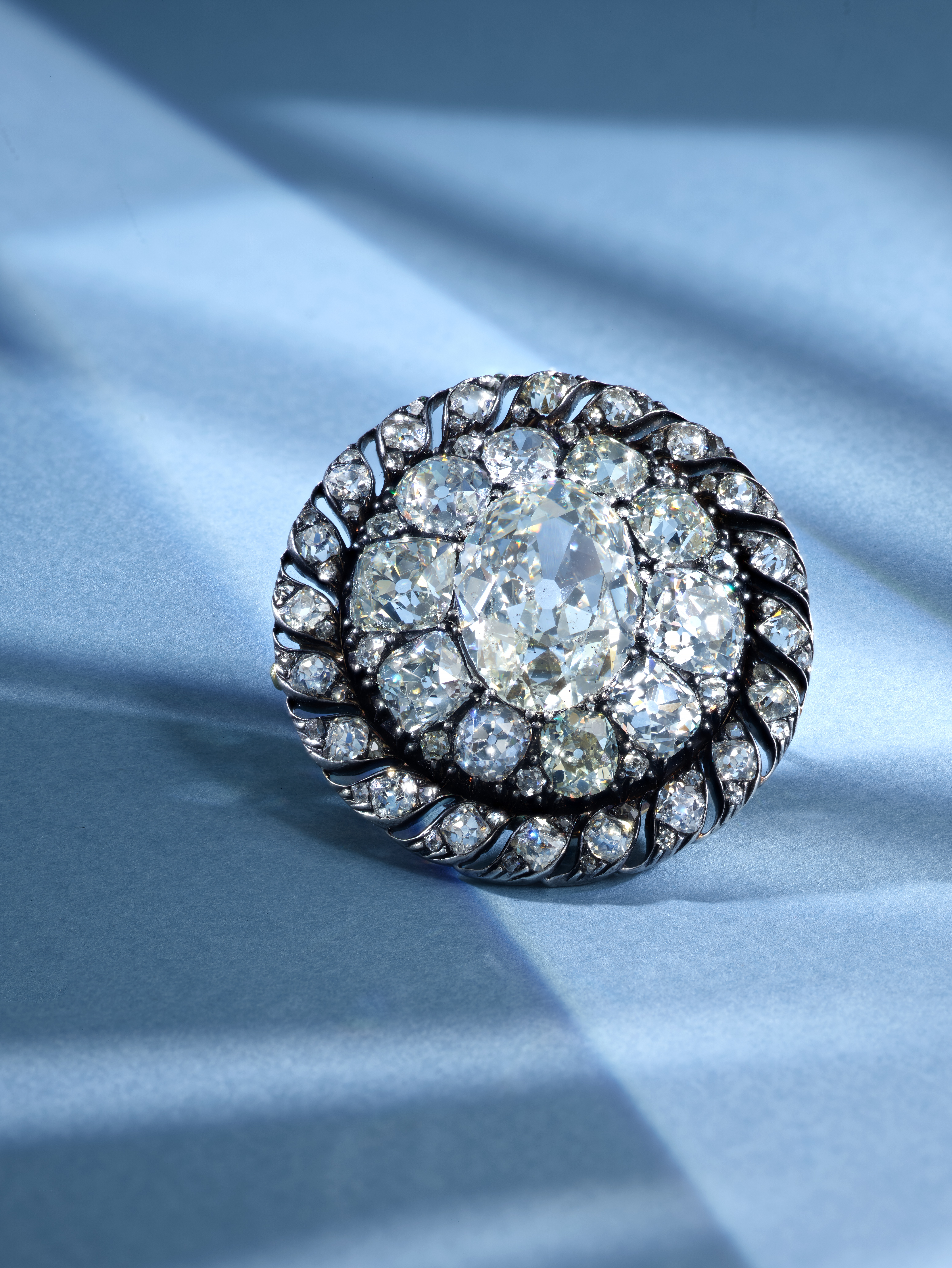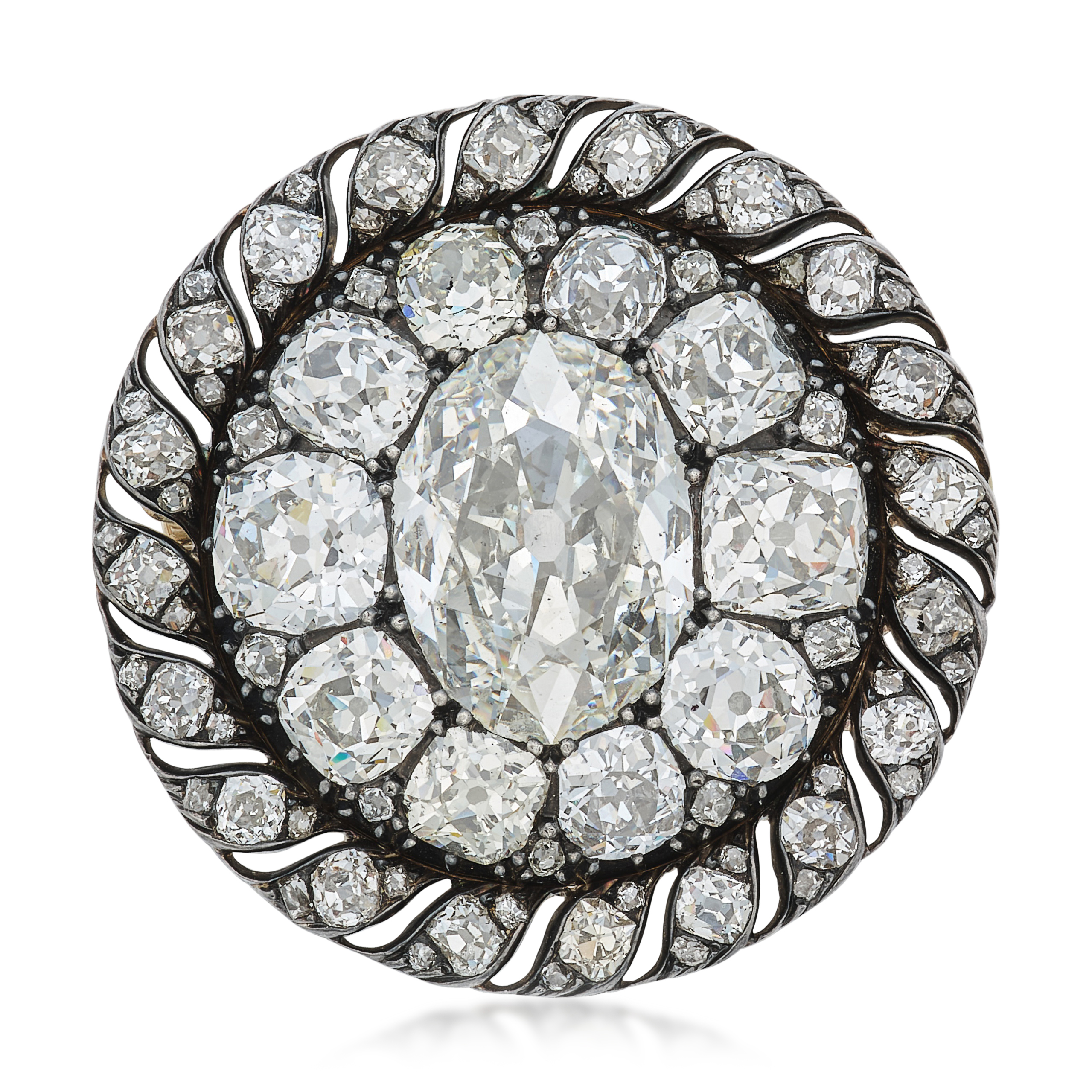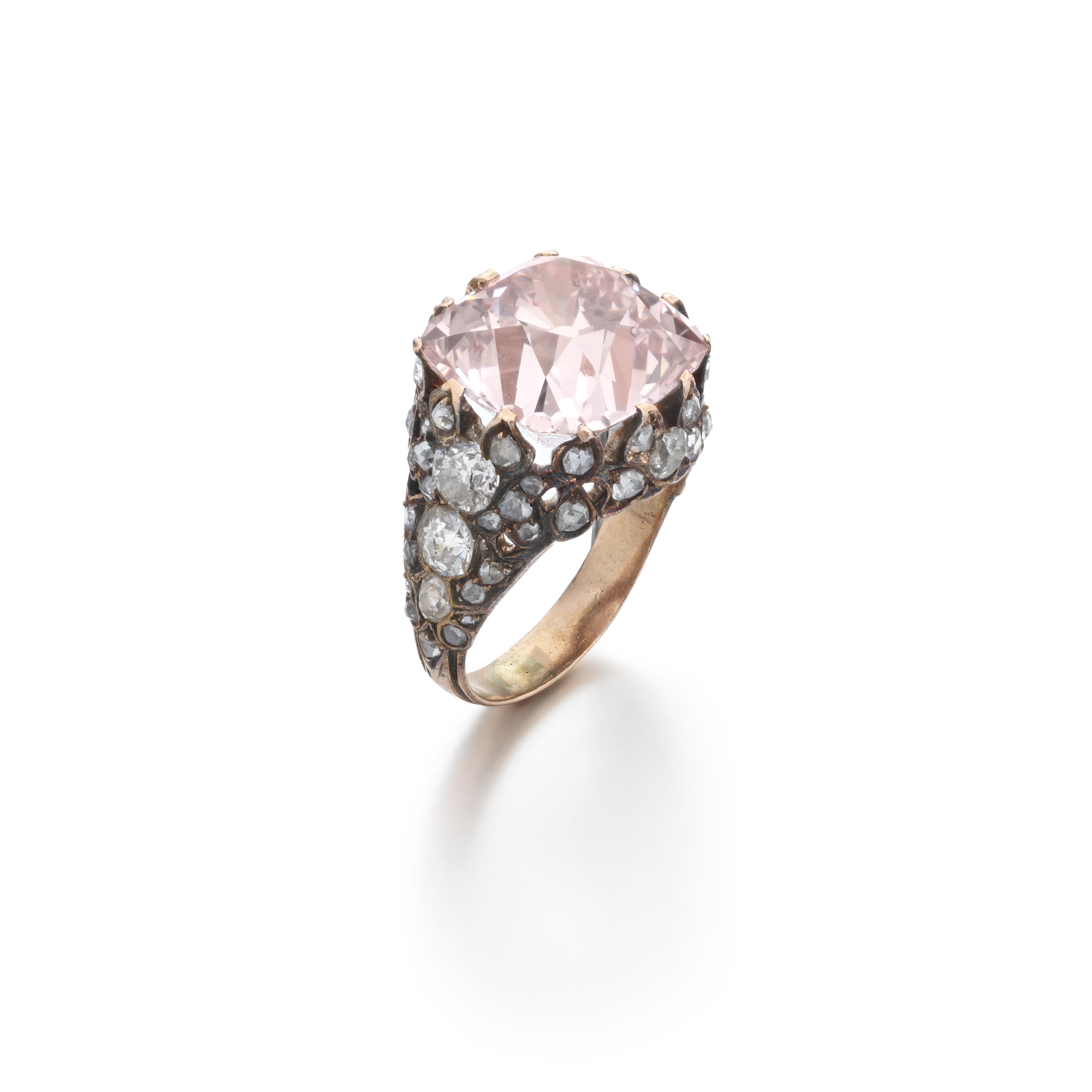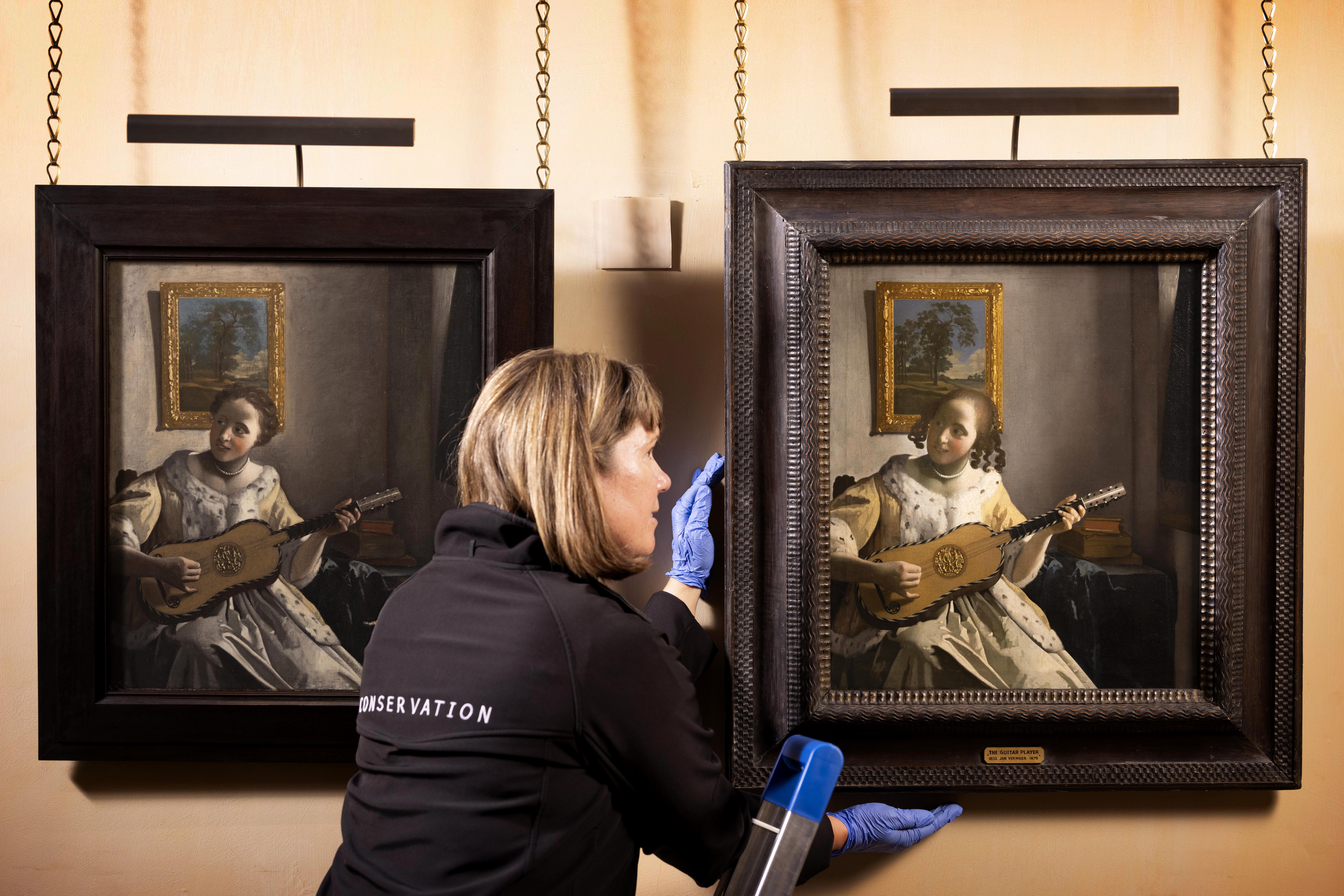How to get your hands on some Napoleonic jewels the legal way
Napoleon's one-of-a-kind brooch is going under the hammer tomorrow.


The moped tracks outside the Louvre, in Paris, have barely had a chance to cool, but another important Napoleonic jewel is about to make headlines.
However, this time, the historic piece is legitimately for sale. The one-of-a-kind brooch is a glittering spoil of war, owned by Napoleon Bonaparte, and seized by the Prussians during the Battle of Waterloo, in 1815.

The old mine-cut diamond brooch or pendant, owned by Napoleon Bonaparte.
Studded with old mine and mazarin-cut diamonds, the jewel is destined for the auctioneer’s block, in Geneva, tomorrow (November 12) as part of Sotheby’s ‘Royal & Noble’ sale. It was part of a precious cache — including weapons, medals, a hat, silverware, and a box containing dozens of loose diamonds — that the self-appointed French Emperor brought with him to fight.
When his armies were overwhelmed on the battlefield by combined British and Prussian forces, Napoleon beat a hasty retreat to the French capital, but famously abandoned his carriage at Genappe, just south of Waterloo because the road was congested. The emperor escaped on horseback, but the bottleneck cost him his carriage and its valuable contents. On June 21, 1815, three days after the fight, the brooch was offered by one Lieutenant von Pless to the Prussian king, Friedrich Wilhelm III, as a trophy.
‘I herewith humbly present, in the name of the 15th Regiment and particularly the Fusilier Battalion under my command, a brilliant ornament that we captured in pursuit during the glorious battle,’ von Pless wrote. ‘This ornament is so rare that it should rightfully belong only to the Crown of Prussia and our revered King.’
The circular brooch was crafted for Napoleon in around 1810, and measures 45mm across. At its heart sits a dazzling 13.04-carat, oval-cut diamond, ringed by almost 100 more. It was most likely designed as a hat ornament, to be worn on special occasions — a symbol of the imperial splendour that the emperor manifested for himself and his court following his lavish coronation in 1804.
The brooch was part of the House of Hohenzollern’s collection for generations, passing from Friedrich Wilhelm III to German emperors. During the 19th century, its original pin was replaced with a sturdier fastener, and a pendant loop was added. The piece eventually made its way into a private collection. It is expected to sell for between £115,000 and £153,000.
Exquisite houses, the beauty of Nature, and how to get the most from your life, straight to your inbox.

A light pink diamond and diamond ring, formerly in the collection of Princess Neslishah Sultan.
Other significant jewels going under the hammer include Prince Franz Xaver of Saxony and Poland’s (1730–1806) spectacular natural pearl and diamond hair ornament, and matching pin. The pieces were originally crafted for a tiara, for the wedding of the Prince’s daughter Cunegonde of Saxony, in 1796 — which was later dismantled and its various parts remounted. They could be yours for £322,000 and £474,000 and respectively.
And then there is the show-stopping pink diamond ring that once adorned the fingers of Princess Neslishah Sultan (1921–2012), one of the last Ottoman princesses. The ring, which is coming up for auction for the first time, features an old mine, brilliant-cut light pink diamond of more than 13 carats. It is estimated to sell for between £228,000 and £379,500. Its provenance is extraordinary: before the princess, it was owned by Catherine I of Russia. It was gifted to the Ottoman Sultan Ahmed III in 1711, during the Treaty of Pruth.
These sparkling jewels have, against the odds, survived centuries of upheaval and sweeping political changes, witnesses of events that have reshaped our world and precious links to some of the most prominent figures in human history.
We can only assume that, come tomorrow, security will be sky high (or at least a little bit higher than a German ladder can reach).
Kim Parker is a London-based journalist specialising in jewellery, fashion, and watches. She has more than 20 years’ experience in the luxury industry and, alongside Country Life, has written extensively for titles such as Harper’s Bazaar, Town & Country, The Times, and The Telegraph. When she’s not researching the latest and greatest jewellery finds, she’s happiest on horseback.
-
 Fire, water and fancy puddings. It's the Country Life Quiz of the Day, November 11, 2025
Fire, water and fancy puddings. It's the Country Life Quiz of the Day, November 11, 2025When did London burn like 'rotten sticks'? Where is Bakewell? Who are the Stone Roses? Such important questions
-
 Savile Row might be the beating heart of bespoke men's tailoring, but it was named after a woman
Savile Row might be the beating heart of bespoke men's tailoring, but it was named after a womanSavile Row is the home of the bespoke suit, but its history is a lot more colourful than you might expect.
-
 Savile Row might be the beating heart of bespoke men's tailoring, but it was named after a woman
Savile Row might be the beating heart of bespoke men's tailoring, but it was named after a womanSavile Row is the home of the bespoke suit, but its history is a lot more colourful than you might expect.
-
 A painting owned by Edward Guinness is on display next to a near identical version at Kenwood House — but which one is the real Vermeer?
A painting owned by Edward Guinness is on display next to a near identical version at Kenwood House — but which one is the real Vermeer?A mini exhibition at Kenwood House allows viewers to ‘to practise their own connoisseurship’.
-
 What is everyone talking about this week: The great generational wealth transfer foretold by the financial press has already begun in the form of given heirlooms
What is everyone talking about this week: The great generational wealth transfer foretold by the financial press has already begun in the form of given heirloomsIf you're planning to propose to someone forget Graff or Cartier because it's time for tea with Granny.
-
 Omoda 9: Not a Range Rover, but it might be the next best thing
Omoda 9: Not a Range Rover, but it might be the next best thingOmoda, one of the host of Chinese-made cars now on offer in the UK, presents its flagship SUV. We found a car of no frills, and plenty of luxury, at an extremely reasonable price point.
-
 A handful of Scotland's last available freshwater pearls have been transformed into 'mesmerising' pieces of jewellery
A handful of Scotland's last available freshwater pearls have been transformed into 'mesmerising' pieces of jewelleryEdinburgh jeweller Hamilton & Inches have been trusted to handle the incredibly rare organic gemstones.
-
 ‘So many of us look at the world through our screens and forget to pay attention to the world outside’: Katy Hessel on the world’s great female artists, why free entry to museums matters and her consuming passions
‘So many of us look at the world through our screens and forget to pay attention to the world outside’: Katy Hessel on the world’s great female artists, why free entry to museums matters and her consuming passionsThe author of ‘The Story of Art Without Men’ speaks to Lotte Brundle about the dangers of AI, how she fell in love with the art world and why it’s okay that her favourite painting is by a male artist.
-
 What links myself, David Beckham and The King? We all have an affinity for the Aston Martin DB6, a car that has been unfairly punished for not being in a James Bond film
What links myself, David Beckham and The King? We all have an affinity for the Aston Martin DB6, a car that has been unfairly punished for not being in a James Bond filmThe Aston Martin DB6 is better than the DB5, and I am tired of pretending that it isn't.
-
 'The King of Hell was fat from gorging on souls and he expelled some more from his bowels': The many guises of the Devil Antiquity to present day
'The King of Hell was fat from gorging on souls and he expelled some more from his bowels': The many guises of the Devil Antiquity to present dayTaking as many guises as his names, the Prince of Lies turned at times into a man-devouring ogre, a mutant medley of claws, horns and wings, or the brooding rebel that lit the imagination of Romantic painters.
